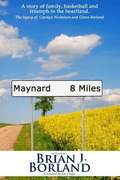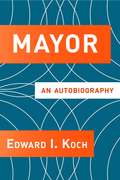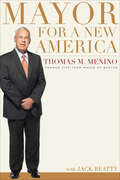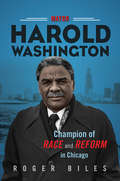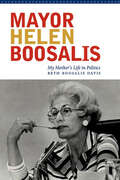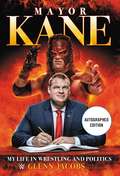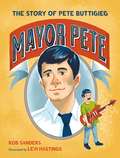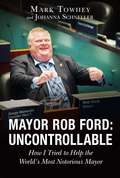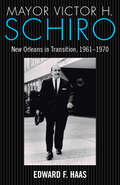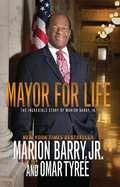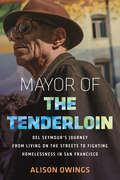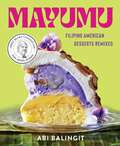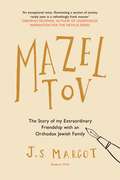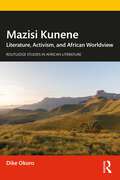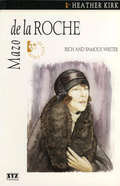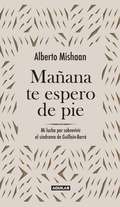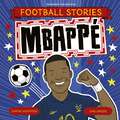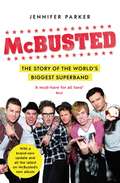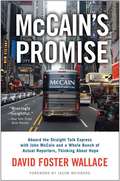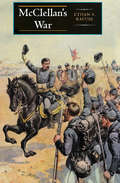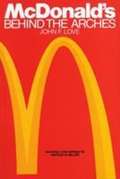- Table View
- List View
Maynard 8 Miles: A Story of Family, Basketball, and Triumph in the Heartland
by Brian BorlandMaynard 8 Miles is the uplifting story of the triumph of family, hard work and talent in basketball and in life. Hardships are overcome, love is found and incredible basketball feats are achieved.Join first time author Brian Borland as he shares the legacy of his family and relates the heartwarming tale that he was born to tell.
Mayor
by Edward I. KochThe controversial ex-mayor of New York speaks out on his years in office, the people, and the policies of "the Big Apple".
Mayor For A New America
by Jack Beatty Thomas M. MeninoBoston&’s late, revered mayor explains the power behind the city&’s dramatic success — and its lessons for Washington power brokers. When Thomas Menino stepped down from office as one of the longest-serving major-city mayors in the nation&’s history, he was among the most popular politicians in modern memory. In Mayor for a New America, Menino gives a play-by-play look at how he managed to wield political influence while staying fiercely loyal to the interests of the people he was elected to serve. The unassuming guy from Boston&’s Hyde Park neighborhood was an unlikely politician. He&’d been a backstage campaign workhorse whose career nearly ended the second he stepped into the spotlight, tongue-tied. Although not a fancy talker, Mayor Menino took to the details of running the city he loved. By taking care of the small stuff — fixing potholes, cleaning up parks, plowing the streets quickly after snowstorms — he won the public&’s trust to deliver on the big issues. He had a progressive agenda and was forward thinking in his support of an innovation economy and a champion of gay rights. He also held fast to the values of his childhood — good schools, a growing middle class, and close-knit, welcoming communities. In this candid look back at a career that spanned the busing crisis of the 1970s, the remarkable resurgence of the neighborhoods, and the city&’s extraordinary response to the Boston Marathon bombing, Menino tells behind-the-scenes stories and gives a master class in urban politics. And his proven, people-focused track record provides inspiration for a dysfunctional Washington to actually get things done — just like he did in Boston.
Mayor Harold Washington: Champion of Race and Reform in Chicago
by Roger BilesRaised in a political family on Chicago's South Side, Harold Washington made history as the city's first African American mayor. His 1983 electoral triumph, fueled by overwhelming black support, represented victory over the Chicago Machine and business as usual. Yet the racially charged campaign heralded an era of bitter political divisiveness that obstructed his efforts to change city government. Roger Biles's sweeping biography provides a definitive account of Washington and his journey from the state legislature to the mayoralty. Once in City Hall, Washington confronted the back room deals, aldermanic thuggery, open corruption, and palm greasing that fueled the city's autocratic political regime. His alternative: a vision of fairness, transparency, neighborhood empowerment, and balanced economic growth at one with his emergence as a dynamic champion for African American uplift and a crusader for progressive causes. Biles charts the countless infamies of the Council Wars era and Washington's own growth through his winning of a second term—a promise of lasting reform left unfulfilled when the mayor died in 1987. Original and authoritative, Mayor Harold Washington redefines a pivotal era in Chicago's modern history.
Mayor Helen Boosalis: My Mother's Life in Politics
by Beth Boosalis DavisAs a 1950s housewife and League of Women Voters volunteer who spearheaded the city of Lincoln&’s switch to a &“strong mayor&” form of government, Helen Boosalis (1919–2009) never anticipated that she herself would one day be that strong mayor and chief executive of Nebraska&’s capital city.Helen Boosalis&’s story, told by her daughter, Beth Boosalis Davis, is that of a true pioneer of women in politics. The daughter of Greek immigrants, Boosalis achieved national prominence as the first woman president of the U.S. Conference of Mayors and as an outspoken advocate for economically distressed cities facing President Reagan&’s &“new federalism.&” Winning the Democratic nomination for governor of Nebraska in 1986, Helen Boosalis ran against Kay Orr in the first gubernatorial contest between two women in U.S. history. The interwoven tales of conflict and challenge, from the mayor&’s office to the campaign trail, combine personal insight into one woman&’s trailblazing political history with a compelling memoir of a half century of public service and private devotion shared by two remarkable women, mother and daughter.Listen to an interview with Helen Boosalis and Beth Boosalis Davis on AARP's Radio Prime Time show.
Mayor Kane: My Life in Wrestling and Politics
by Glenn JacobsThe surprising story of how wrestling superstar Glenn "Kane" Jacobs beat all the odds to become the mayor of Knox County, Tennessee.Even in his heyday in wrestling, Jacobs was inspired to pursue politics by popular libertarian figures such as former Republican presidential candidate Ron Paul, Republican Senator Rand Paul, Fox News' Judge Andrew Napolitano and others, and that led him to fulfill his own political ambitions.Before becoming Mayor Kane, Glenn "Kane" Jacobs was one of WWE's top Superstars for over two decades and traveled the globe with the likes of "Stone Cold" Steve Austin, Dwayne "The Rock" Johnson, John Cena, Ric Flair, and many others. He dominated the WWE with The Undertaker as the "Brothers of Destruction." Kane reinvented himself with the help of Daniel Bryan forming "Team Hell No." He set "Good ol' JR," Jim Ross on fire.The wrestler-turned-politician hasn't hung up his wrestling boots yet. Politics is a contact sport and Jacobs is using his wrestling skills in that arena. Jacobs supports President Trump and his agenda, and is implementing conservative policies in Tennessee.
Mayor Pete: The Story of Pete Buttigieg (Who Did It First?)
by Rob SandersGet to know Mayor Pete Buttigieg, a first-of-his-kind candidate running for a one-of-a-kind office, in Rob Sanders' inspiring picture book biography, featuring illustrations by Levi Hastings.When Pete Buttigieg announced he was running for president, he became the first openly gay candidate to run for the Democratic party’s presidential nomination and the first millennial ever to pursue the office. But before the nation knew him as “Mayor Pete,” he was a boy growing up in a Rust Belt town, a kid who dreamed of being an astronaut, and a high schooler who wondered about a life of public service. Without a doubt, no one could have imagined who Peter Paul Montgomery Buttigieg, the boy who lived in a two-story house on College Street, would become. Through victories and defeats, and the changes that the seasons bring, the young boy from South Bend grew into a man devoted to helping others. Mayor Pete: The Story of Pete Buttigieg celebrates the life of an American who dared to be the first and who imagined a better world for everyone.A Who Did It First? Book
Mayor Rob Ford: Uncontrollable
by Mark Towhey Johanna SchnellerIn February 2013, Toronto’s former mayor, Rob Ford, was caught on video smoking crack cocaine. Weeks later, he was accused of groping a campaign rival; had to leave a gala for being too intoxicated; and was fired as the coach of a high school football team. The events were part of a stream of Rob Ford "mishaps,” which include a DUI; accusations of domestic violence; a trial where the Toronto City Council stripped him of his powers; even accusations of murder. Through it all, Ford’s former chief of staff, Mark Towhey, stood by his side. Towhey was part of Ford’s inner circ≤ he’d joined Ford’s mayoral campaign in 2010 and quickly became one of his closest advisors. He responded to media questions regarding Ford’s drug and alcohol additions, his anger management problems, and, of course, the video of Ford smoking crack. In May 2013, Mark Towhey had a confidential conversation with Ford. Much speculations has been about this conversation, but thus far, the public only knows two words from that conversation; Towhey told Ford to "get help. ” They also know what happened next, Towhey was fired. In Mayor Rob Ford: Uncontrollable, Towhey recounts the conversation and shares what Ford was like behind the scenes. This is a candid insider account of working with Ford, covering for him, respecting his strengths, and managing his weaknesses. It will release after Ford has dropped out of the mayoral election, as he battles health problems, and as the world waits to see what this larger-than-life personality does next.
Mayor Victor H. Schiro: New Orleans in Transition, 1961–1970
by Edward F. HaasDuring the turbulent 1960s, the city of New Orleans experienced unprecedented economic growth, racial tensions and desegregation, political realignment, and natural disaster. Presiding over this period of sweeping change was Mayor Victor H. Schiro (1904-1992), an unassuming, moderate Democrat who sought the best for his city and adhered strictly to the rule of law in a region where laissez faire was standard practice and hardened defiance was a social norm. Schiro sought fairness for all and navigated a gauntlet of conflicting pressures. African Americans sought their civil rights, and whites resisted the new racial environment. Despite vigorous opposition and an unfriendly press, Schiro won election twice. Under his direction, the city experienced numerous municipal reforms, the inclusion of African Americans in executive positions, and the broad extension of city services. The mayor, a businessman, recruited new corporations for his city, heralded the development of New Orleans East, and brought major professional sports to the Crescent City. He also initiated the plans for the construction of the Superdome. At the height of this activity, Hurricane Betsy devastated New Orleans. In response, Schiro coordinated with the federal government to initiate rescue and recovery at a rapid pace. In the aftermath, he lobbied Congress for relief funds that set the precedent for National Federal flood insurance.
Mayor for Life
by Omar Tyree Marion Barry Jr.Four-time mayor of Washington, DC, Marion Barry, Jr. tells his shocking and courageous life story, beginning in the cotton fields in Mississippi to the executive offices of one of the most powerful cities in the world.Known nationally as the disgraced mayor caught on camera smoking crack cocaine in a downtown hotel room with a mistress, Marion Barry Jr. has led a controversial career. This provocative, captivating narrative follows the Civil Rights activist, going back to his Mississippi roots, his Memphis upbringing, and his academic school days, up through his college years and move to Washington, DC, where he became actively involved in Civil Rights, community activism, and bold politics. In Mayor for Life, Marion Barry, Jr. tells all--including the story of his campaigns for mayor of Washington, his ultimate rise to power, his personal struggles and downfalls, and the night of embarrassment, followed by his term in federal prison and ultimately a victorious fourth term as mayor. From the man who, despite the setbacks, boldly served the community of Washington, DC, this is his full story of courage, empowerment, hope, tragedy, triumph, and inspiration.
Mayor of the Tenderloin: Del Seymour's Journey from Living on the Streets to Fighting Homelessness in San Francisco
by Alison OwingsThe unforgettable account of Del Seymour, who overcame 18 years of homelessness and addiction to become one of the most respected advocates in San FranciscoIn Mayor of the Tenderloin, journalist Alison Owings slips behind the cold statistics and sensationalism surrounding San Francisco&’s Tenderloin to reveal a harrowing and life-affirming account of Del Seymour—whose addiction led him into eighteen years of homelessness, pimping, and drug dealing. Once sober, he started Tenderloin Walking Tours and later Code Tenderloin, the remarkable organization teaching homeless, recovering addicts, sex workers, dealers, ex-felons, and other marginalized people how to get and keep a job.Owings traces Del&’s story and those in his orbit: from his daughters, sobriety buddy, and ex-girlfriend, to a police captain and a psychiatric social worker, housing activists and corporate philanthropists, and Del&’s Code Tenderloin students. In the Tenderloin, in a city known for its beauty and currently infamous for its divide between haves and have-nots, Owings highlights how Del gives back to people struggling with the same daunting setbacks—including a criminal record—he once faced.Honest and compelling, Mayor of the Tenderloin follows homelessness in one of America&’s toughest neighborhoods as it was lived—in the words of someone who lived it and is now fighting to solve it.
Mayumu: Filipino American Desserts Remixed
by Abi BalingitNew York Time's "The Best Cookbooks of 2023" James Beard Award-winner for Emerging Voice 2024James Beard Award-nominee for Baking and Desserts 2024A sweet baking book of fantastically imaginative remixed Filipino American dessert recipes, plus essays on the Filipino American experience by baker-fundraiser Abi Balingit.When the pandemic started her lonely work-from-home life in 2020, Abi Balingit channeled all her energy into the one thing that brought her joy: baking. In her tiny, dimly lit, shared kitchen, she produced hundreds of “pasalubong” (souvenir) boxes filled with especially creative treats that blended the Filipino treats and Western style baked goods she grew up with. Each time, she’d sell out within hours and donated the proceeds to support her community in need.Now Abi shares some of these cult-favorite desserts with Mayumu (which means “sweet” in one of the 8 major languages in Philippines), an incredibly fresh baking book of 75 recipes that span from the never-before-seen, incredibly inventive flavor combinations that Abi dreamed up, to the more familiar, classic Filipino favorites: Adobo Chocolate Chip Cookie Strawberry Shortcake Sapin-Sapin (Rice Cakes)Ube Macapuno Molten Lava CakesMatcha PastillasMelon Chicharron CrumbleHalo-Halo Baked AlaskaThroughout, essays following Abi’s heritage and self-discovery introduce the flavors and experiences that have shaped her life, from visiting the motherland and her parents’ birthplace in Pampanga, Philippines, to California where she grew up and went to school, to her current home, Brooklyn, NY. This beautiful book is a celebration of the Filipino American experience, perfect for home bakers wanting both nostalgic and excitingly new recipes.
Maza Desh, Mazi Manas: माझा देश, माझी माणसं
by Suruchi Pandey“माझा देश, माझी माणसं” हे सुरुची पांडे लिखित पुस्तक आहे, ज्यामध्ये लेखकाने भारतीय समाजातील विविध पात्रांच्या कथा आणि अनुभवांची मांडणी केली आहे. या पुस्तकात लेखकाने आपल्या देशातील विविध सामाजिक, सांस्कृतिक, आणि भावनिक पैलूंवर प्रकाश टाकला आहे. पुस्तकातील कथा विविध व्यक्तिमत्त्वांवर आधारित आहेत, ज्यांचं आयुष्य वेगवेगळ्या परिस्थितींमध्ये रंगलेलं आहे. लेखकाने त्यांच्या दृष्टीकोनातून आपल्या समाजातील प्रश्न, समस्या, आणि त्यांवरील त्यांची विचारधारा व्यक्त केली आहे. पुस्तकात काही कथांमध्ये ग्रामीण जीवनातील साधेपणा आणि समस्यांचा उल्लेख आहे, तर काही कथांमध्ये शहरीकरणाच्या वेगवान जीवनशैलीचे विविध पैलू दिसून येतात. “माझा देश, माझी माणसं” हे पुस्तक वाचकांना विचार करायला लावणारं, प्रेरणादायी आणि भारतीय समाजाचं प्रतिबिंब दाखवणारं आहे. लेखकाने साध्या आणि ओघवत्या भाषेत कथांचं वर्णन केलं आहे, ज्यामुळे वाचक पुस्तकाशी सहजतेने जोडला जातो.
Mazel Tov: The Story Of My Extraordinary Friendship With An Orthodox Jewish Family
by J. S. MargotA heartwarming, funny and provocative memoir of a woman navigating clashing cultures during her decades-long friendship with an Orthodox Jewish family, new in paperbackWhen 20-year-old student J. S. Margot took a tutoring job in 1987, little did she know it would open up an entire world.In the family's Orthodox Jewish household she would encounter endless rules - 'never come on a Friday, never shake hands with a man' - and quirks she had not seen before: tiny tubes on the doorposts, separate fridges for meat and dairy products. Her initial response was puzzlement and occasionally anger, but as she taught the children and fiercely debated with the family, she also began to learn from them.Full of funny misunderstandings and unexpected connections, Mazel Tov is a heartwarming, provocative and disarmingly honest memoir of clashing cultures and unusual friendships - and of how, where adults build walls, sometimes only children can dissolve them.
Mazisi Kunene: Literature, Activism, and African Worldview (Routledge Studies in African Literature)
by Dike OkoroThis book examines the life and work of Mazisi Kunene, the only recognized poet laureate of Africa, a Nobel Prize nominee, and a key symbol of African cultural independence. Kunene is widely recognized for his epic poems that assert cultural identity and condemn the disruption of the growth and development of African culture through colonialism/postcolonialism. This book explores how ‘oraliterature’ and cultural traditions informed Kunene’s poetry, how Kunene’s poetry highlights African women and mothers, and how activism, mythology and transnational identities are depicted in his verse to promote cultural and generational continuities from Africa to the Diasporic Africans. Drawing on a range of interviews and comparative studies, the book situates Kunene’s work in a wider conversation about South African social struggles. This book is an important contribution to our understanding of one of the giants of African literary history. As such, it will be of interest to researchers across African literary and postcolonial studies.
Mazo de la Roche
by Heather KirkIn 1927, Mazo de la Roche was an impoverished writer in Toronto when she won a $10,000 prize from the American magazine Atlantic Monthly for her novel Jalna. The book became an immediate bestseller. In 1929, the sequel Whiteoaks also went to the top of bestseller lists. Mazo went on to publish 16 novels in the popular series about a Canadian family named Whiteoak, living in a house called Jalna. Her success allowed her to travel the world and to live in a mansion near Windsor Castle. Mazo created unforgettable characters who come to life for her readers, but she was secretive about her own life and tried to escape the public attention her fame brought.
Mañana te espero de pie
by Alberto MishaanLa historia real de un hombre que sobrevivió al síndrome Guillain-Barré y le ganó la batalla a la muerte Esto no es una novela. Tampoco es un libro de superación personal o autoayuda. Es la historia real, de un hombre real, que jamás llegó a imaginar que escribiría las páginas de este libro. Este libro no narra el testimonio de Alberto Mishaan, empresario, amante de los deportes acuáticos y la buena gastronomía, quien a sus 60 años, y en el mejor momento de su vida, tuvo que enfrentarse a una extrañísima situación que en 24 horas lo dejó paralizado, desde la cabeza hasta los pies, el síndrome Guillain-Barré, una enfermedad mortal cuyo diagnóstico fue nefasto: tres meses de vida. Este libro, escrito desde el fondo del alma y del corazón es un relato de cómo el autor decidió ganarle la batalla a la muerte. Y de cómo sus familiares fueron los custodios de ese propósito. Una conmovedora narración sobre la fragilidad de estar vivo.
Mbappe (Football Stories #4)
by Simon MugfordWith simple text and engaging art, this fully illustrated picture book is the ideal first read for little football fans. They'll love the story of Mbappe's triumph, especially when they learn that once he was just a football-loving kid just like them.
McBusted
by Jennifer ParkerThis is the first book to tell the full inside story of the world's most awesome supergroup, McBUSTED. McBusted takes an exclusive look at the birth of Busted and McFly, two ground-breaking pop-rock bands who journeyed through sell-out arena tours with number-one hits, and the unique friendships that the boys shared from the very beginning. Packed with behind-the-scenes gossip, it follows the boys through the years, revealing the truth behind Busted's shock break-up and McFly's hiatus, the secrets of their private lives, and the roller-coaster ride that fame took them on - both the good times and the bad. In September 2013, McFly staged their tenth-anniversary show at the Royal Albert Hall and James and Matt were invited along as special guests to perform a medley of hits with the band. The reaction to the six-piece supergroup was stratospheric and the boys decided to take the new superband on tour - and lo, McBUSTED was born. McBusted walks side by side with Tom, James, Danny, Dougie, Matt and Harry as they build the band and provides a backstage pass into the tour, the fans and what the future might hold.
McCain’s Promise
by David Foster WallaceOne of our most brilliantly entertaining observers of American culture spends a week embedded in Senator John McCain's entourage - and indelibly captures the nonstop circus that is an American presidential campaign.
McCarthy and his Enemies: The Record and its Meaning
by L. Brent Bozell William F. Buckley Jr.Balanced analysis of McCarthy's career.
McCarthy: The Man, the Senator, and the Ism
by Jack Anderson Ronald MayDetailed study of the controversial Senator's life until 1952.
McClellan's War: The Failure Of Moderation In The Struggle For The Union
by Ethan S. Rafuse&“An important book that rescues George B. McClellan&’s military reputation.&” —Chronicles Bold, brash, and full of ambition, George Brinton McClellan seemed destined for greatness when he assumed command of all the Union armies before he was 35. It was not to be. Ultimately deemed a failure on the battlefield by Abraham Lincoln, he was finally dismissed from command following the bloody battle of Antietam. To better understand this fascinating, however flawed, character, Ethan S. Rafuse considers the broad and complicated political climate of the earlier 19th Century. Rather than blaming McClellan for the Union&’s military losses, Rafuse attempts to understand his political thinking as it affected his wartime strategy. As a result, Rafuse sheds light not only on McClellan&’s conduct on the battlefields of 1861-62 but also on United States politics and culture in the years leading up to the Civil War. &“Any historian seriously interested in the period will come away from the book with useful material and a better understanding of George B. McClellan.&” —Journal of Southern History &“Exhaustively researched and lucidly written, Rafuse has done an excellent job in giving us a different perspective on &‘Little Mac.&’&” —Civil War History &“Rafuse&’s thoughtful study of Little Mac shows just how enthralling this complex and flawed individual continues to be.&” —Blue & Gray magazine
